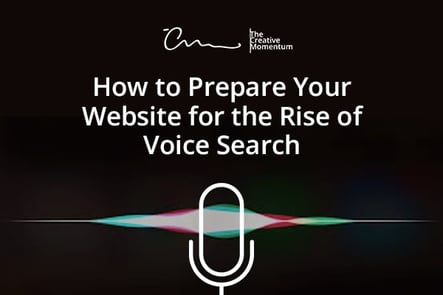
In 2016, Google CEO, Sundar Pichai, claimed that 20 percent of mobile searches are voice searches. Between AI-learning via mobile devices and devices like Google Home and Amazon Echo, more users will trust voice search as these technologies become more advanced. This shift will (and already does) affect SEO and UI/UX. And here is why.
How does voice search affect your SEO strategy?
Since 2011, desktop sales have dropped 6% and experts anticipate 80% of all web searches will be done on mobile devices by 2019. Voice search is a popular feature of mobile devices because it is 5x faster than manual search. We are a busy society and “hands-free” has become a ubiquitous element of who we are.
In addition to mobile web traffic statistics, we have also learned natural language searches are ranking better than traditional keywords.
With this shift in mobile search, your website’s design and SEO strategy must keep up.
More Emphasis on Mobile-First & Responsive Design
Since the beginning of the internet browser, websites have been designed with the desktop in mind. Businesses have always cared more about what their websites looked liked on desktop screens more than how their websites looked on mobile devices.
To make desktop-designed websites look good on mobile devices, web designers and developers started to move towards responsive design. Responsive design essentially means that the web page will adjust its dimensions according to the user’s screen size and orientation. This has been the primary way of achieving balance between desktop and mobile users.
However, Google recently announced that they will prioritize mobile-first designs. Mobile-first design is the idea that a website should be designed for a mobile device and THEN thinking about the desktop version. Essentially, advances in the way our society uses mobile devices has completely flip-flopped the way web designers are approaching the user experience.
More importantly, we need to understand that mobile optimization focuses on serving the content first and foremost. A 5.5 inch display holds far less real estate compared to a 24 inch monitor. With that in mind, there are things you can get away with on a desktop monitor that become user friction on a mobile device. Consider keeping content above the fold, avoiding images that may clutter the screen and affect load time, and even minimizing the navigation menu if it takes up too much real estate.
If you are not sure if your website is responsive or designed for mobile-first, use Google’s mobile-friendly test to see where your website stands.
Claim Your Google MyBusiness
Are you old enough to remember how important the Yellow Pages phone book was? You could look up a business by category, read a description of the business, and then give the business a call with the phone number provided. Google made the phone book obsolete by adding their internet version, called Google MyBusiness.
Google MyBusiness lets searchers know who you are, what your website is about, how to best contact you, and even shows your location & allows for reviews. Where is the closest pizza restaurant? Is there a cafe nearby? In 2016, the Internet Trends Report shows that 22% of voice searchers are looking for local answers. If you haven’t done it yet, you need to claim your Google MyBusiness account. The best part is that Google serves local results before position #1 in the SERPs.
Don’t Focus on Keywords
When Google first launched, there were a few competitors. One of the competitors was AskJeeves.com. AskJeeves worked a little bit differently than Google. While Google users would type in a keyword phrase like, “gas station near me,” AskJeeves users typed it as a question. “What is the closest gas station near me?” Google eventually went on to win the battle between the search engines. We learned people would rather not type their searches in a question format.
With voice search becoming more relevant, we’re starting to see a shift in how users are searching. Voice searches tend to be more natural and conversational. Users are taking a more “AskJeeves” style approach to searching because that’s how humans naturally speak. I would also add that Siri, Google, Cortana, and Bixby are built to be conversational AI platforms. When you activate Siri, she responds with, “How can I help you?” This places you in a position to be conversational. These multi-million dollar companies are being intentional in how they want you to respond to their bots. Their platforms use AI to learn how humans speak and how to interact with humans through conversations.
How does this affect the way that you optimize? One way to go about optimizing for voice searchers is to focus on questions that your audience might be asking. Identify these questions and then create content that focuses on the search questions.
Voice Search is the Future
Whether we like it or not, voice search is here to stay. Every Microsoft tablet or laptop is equipped with Cortana. There are over 1.5 billion phones sold per year and 99.6% of those phones are equipped with Siri, Bixby, or Google platforms. On top of that, home automation devices like Google Home & Amazon Echo are seeing exponential growth.
In the next couple of years, we will continue to see improvements in the technology. Amazon has already started taking steps in e-commerce by allowing you to buy items on Amazon with their Echo device. Now, imagine being able to talk to your car; asking for the location of the closest coffee shop; telling it to order your coffee; and then telling it to drive you to the said location to pick up your drink. All of these technologies exist independently. It is a matter of time until we see the technology mesh. When you begin optimizing your website for voice search, you are optimizing your website for the future.

